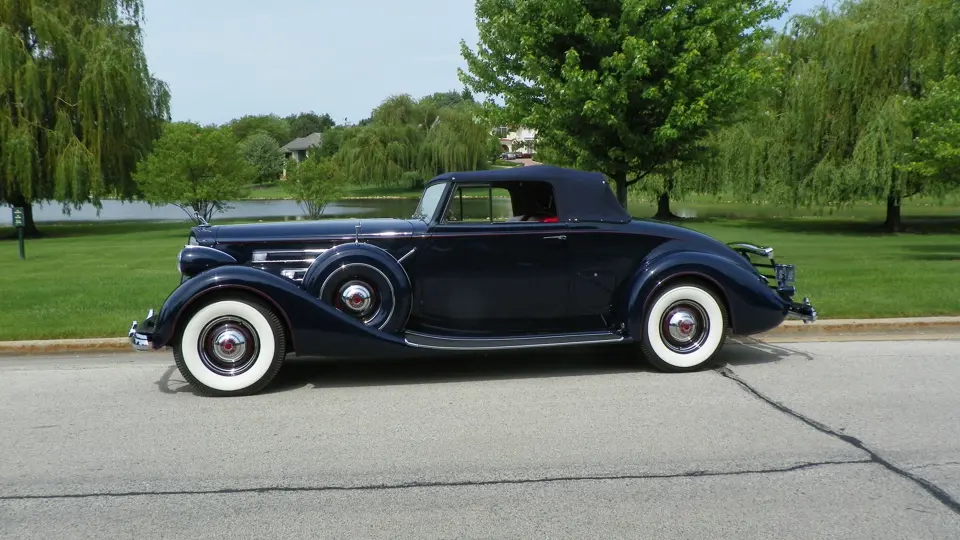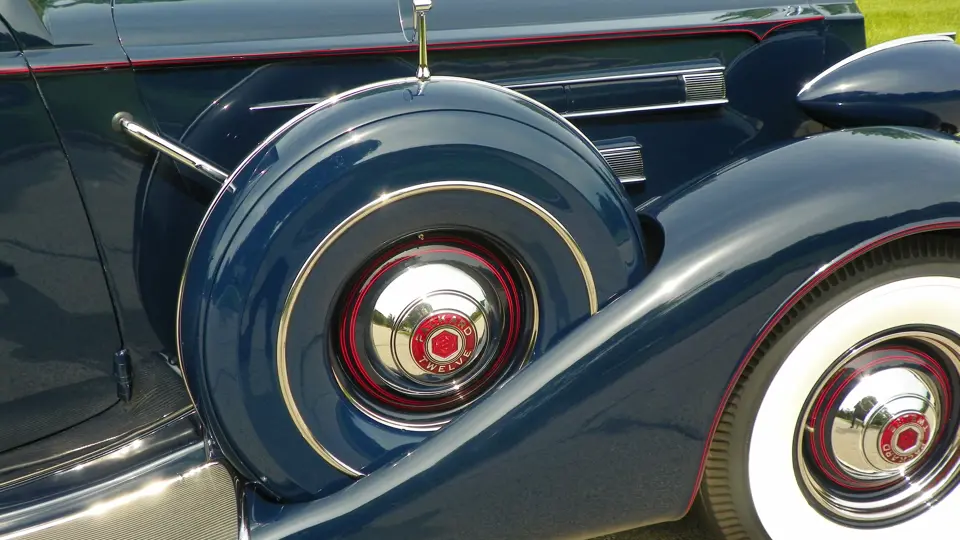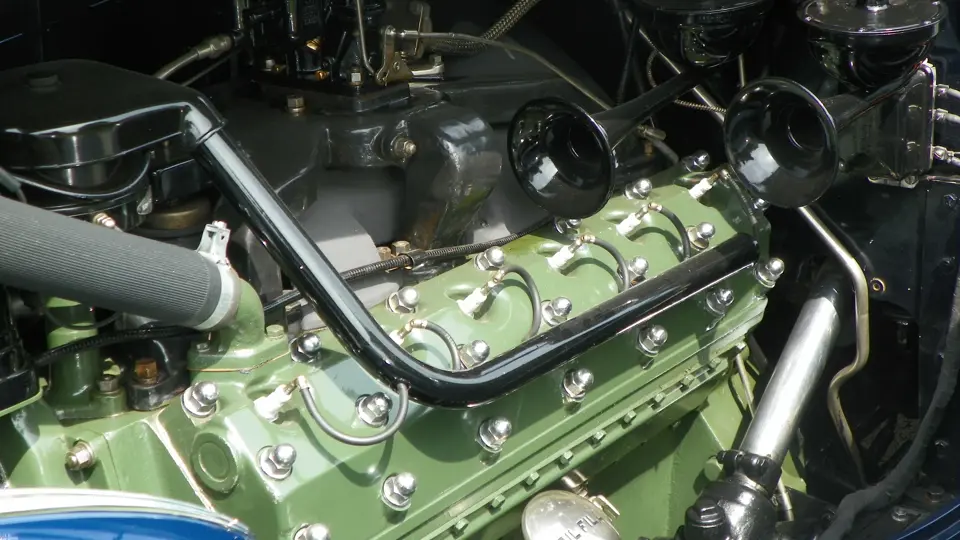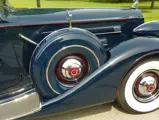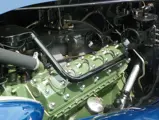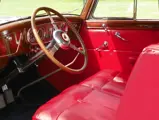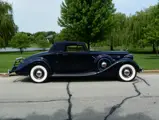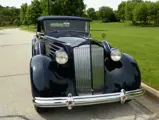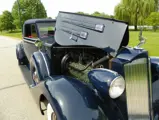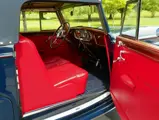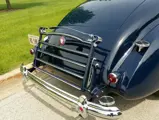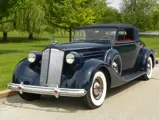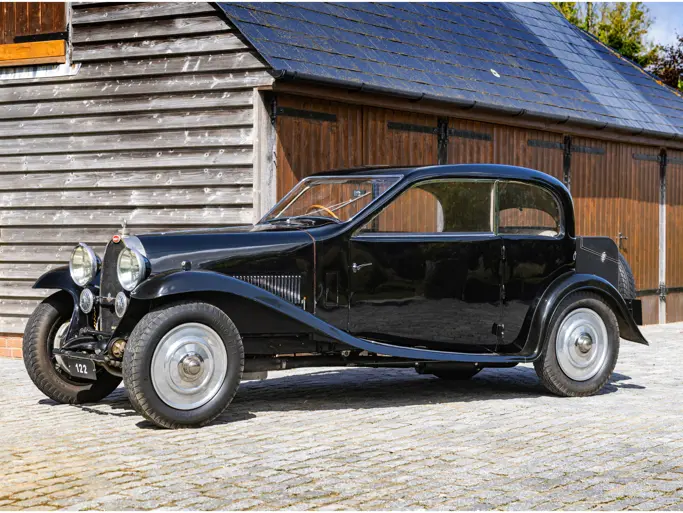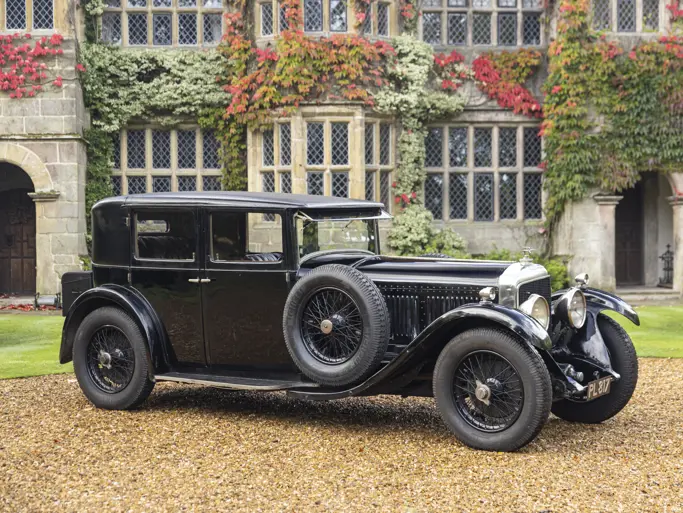Series 1507. 175 bhp, 473 cu. in. 67-degree V-12 engine, three-speed synchromesh manual transmission, independent front suspension with coil springs, live rear axle with semi-elliptic leaf springs, and four-wheel, vacuum-assisted hydraulic drum brakes. Wheelbase: 139"
- Excellent restoration, shown at Meadow Brook in 2009
- Elegant colors with many desirable accessories
Ironically, many of the greatest automobiles of the classic era arose from the depths of the Great Depression. The Packard Twelve had few peers and was acknowledged as one of the finest automobiles of its time, and Packard’s relentless and careful refinement ensured that these hand-built “Senior” Packard models continue to rank among the most highly prized and sought-after classics today.
By the 1930s, the Packard Motor Car Company already possessed a wealth of experience with 12-cylinder engines. Their first, the Twin Six of 1916-1923, had become almost synonymous with the genre and was phased out in favor of the simpler and more advanced Single Eight that was introduced in 1924. While the Single Eight set new standards for smoothness and agility during the late 1920s, the rekindled multi-cylinder wars had resumed in earnest by the onset of the 1930s in Detroit. Cadillac introduced both its V-16 in 1930 and its V-12 in 1931, while Auburn, Marmon, Pierce-Arrow and even Franklin had their own 12-cylinder engines in the wings for 1932.
Resurrecting the “Twin Six” name, Packard met this new competitive threat with a completely new engine. A large-displacement V-12 design with a 67-degree cylinder-bank angle, development of this new power unit was the happy by-product of an aborted front-wheel drive development project. As released, the new Twelve initially displaced 445 cubic inches, 20 more than the old Twin Six, while developing 75 percent more power. In 1933, the model name was simplified to “Packard Twelve,” and two years later, engine displacement rose to 473 cubic inches, and output now climbed accordingly to 175 brake horsepower.
Overall, the Packard Twelve was a conservative car with finely tailored lines, elegant appointments, a refined chassis and a whisper-quiet, 12-cylinder engine. All-new bodies introduced for 1935 offered true envelope styling with the body, hood, fenders and running boards incorporated into a smooth design. In addition, increased horsepower and improvements in suspension and steering, along with improved engine mounts, provided ease of operation and dramatically improved passenger comfort.
While the 1936 models were virtually unchanged, the Fifteenth Series of 1937 brought a comprehensive series of mechanical improvements. Most notably, the introduction of “Safe-T-Flex” independent front suspension, based on the sound design of the junior One-Twenty, debuted on the “Senior” Packard models. Other improvements included the adoption of hydraulic brakes, disc-type steel wheels and the elimination of the Bijur central chassis lubrication system.
This beautifully restored 1937 Packard Twelve Model 1507 Convertible Coupe was most recently shown at the 2009 Meadow Brook Concours d’Elegance. Past owners include the well-known San Francisco-area collector Bev Ferreira, in whose ownership the car was the cover and centerfold of the Fall 1974 edition of the Cormorant.
It exemplifies perhaps the most attractive of the Fifteenth Series body styles with its sporting, elegant open body on the shorter 139-inch wheelbase Twelve chassis. The stately dark blue exterior finish is complemented by handsome red pinstripe accents along the beltline and wheel arches, as well as Packard’s characteristically restrained and tasteful application of chrome accents. The many desirable period accessories include dual side-mounted spare tires with hard covers and chrome mirrors, along with a chrome driver’s side-view mirror, dual windshield wipers, dual golf bag doors and a rear-mounted accessory trunk rack. Wide whitewall tires, steel disc wheels with red pinstripe accents and chrome hubcaps complete the handsome exterior.
The passenger cabin is trimmed in red leather upholstery and dark blue carpeting. Rich wood-grain trim includes the window frames and the handsome dash, which contains a lovely insert housing the instruments, along with a clock and a rare radio unit. The rumble seat, which accommodates two additional passengers, features red leather upholstery along with fold-over leather armrests. Underneath the expansive hood, the tidy engine bay remains period correct and highly detailed, as does the original V-12 engine, which is also period correct in its presentation.
Even during the height of the Depression, the Packard Twelve sold for approximately $5,000 to $6,000, the cost of at least 10 new popular-priced cars. While 1937 was a good year for Packard, just 1,300 Twelves were produced, all but ensuring their place among the rarest and most desired masterpieces of the Classic Era.
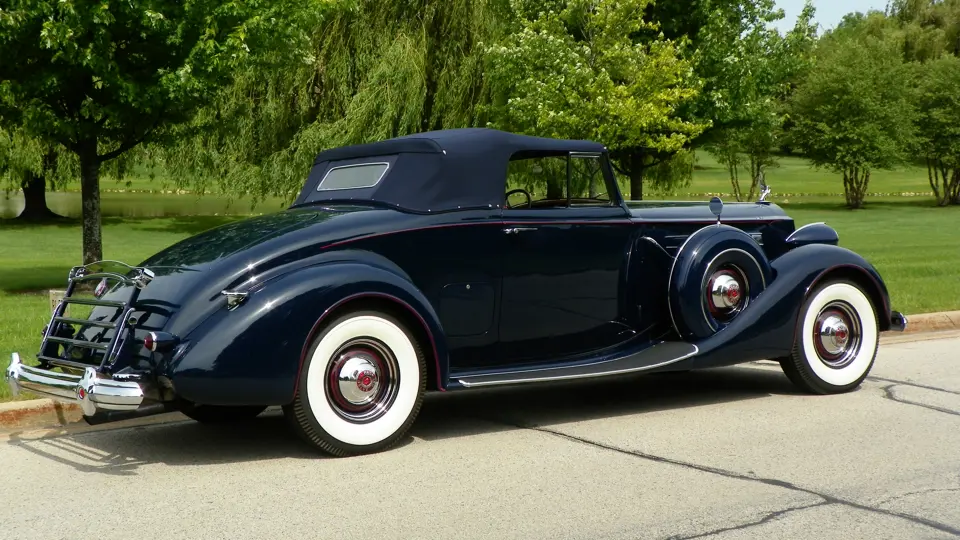
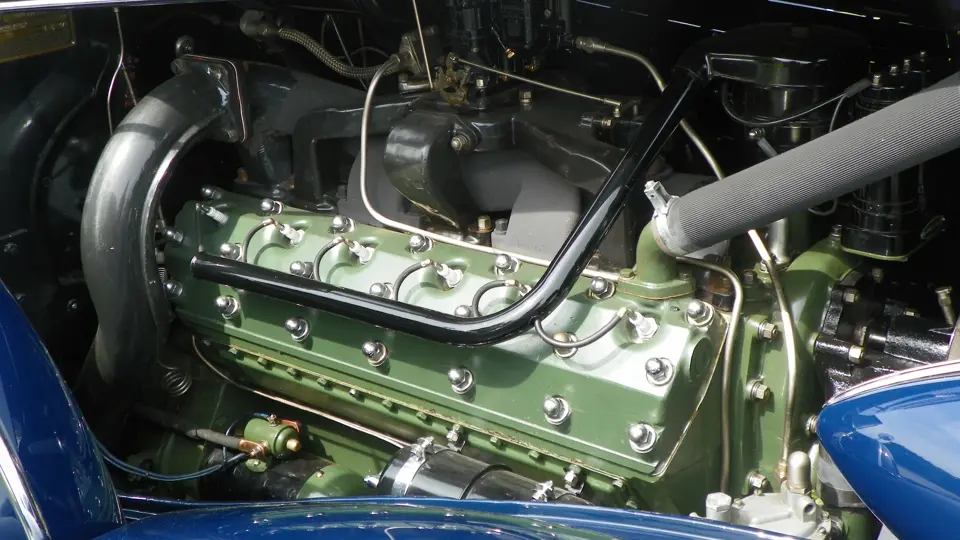
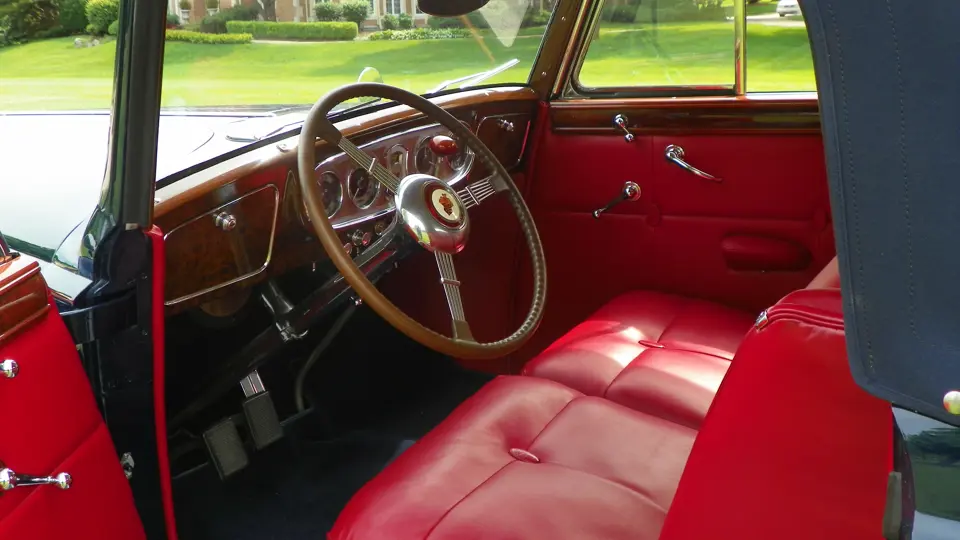

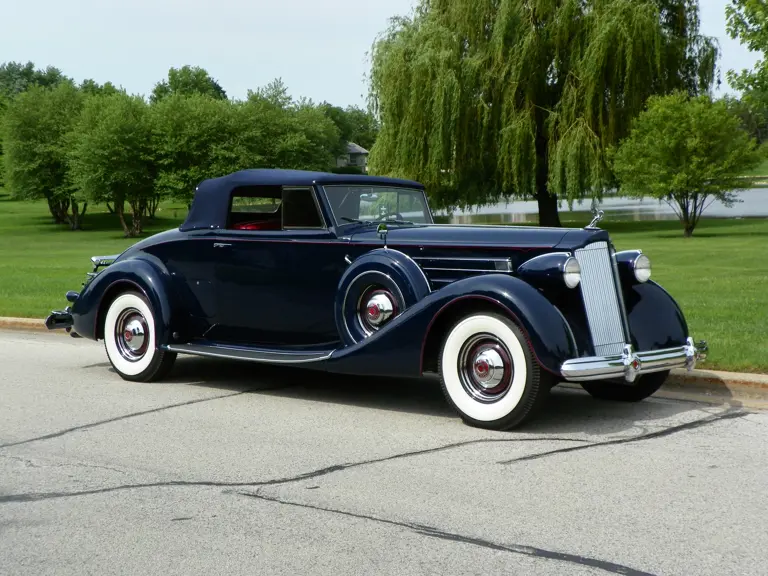
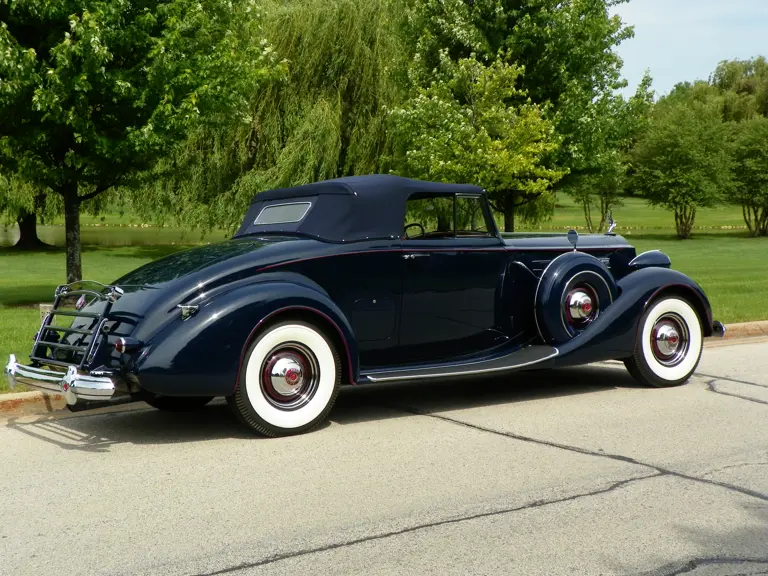
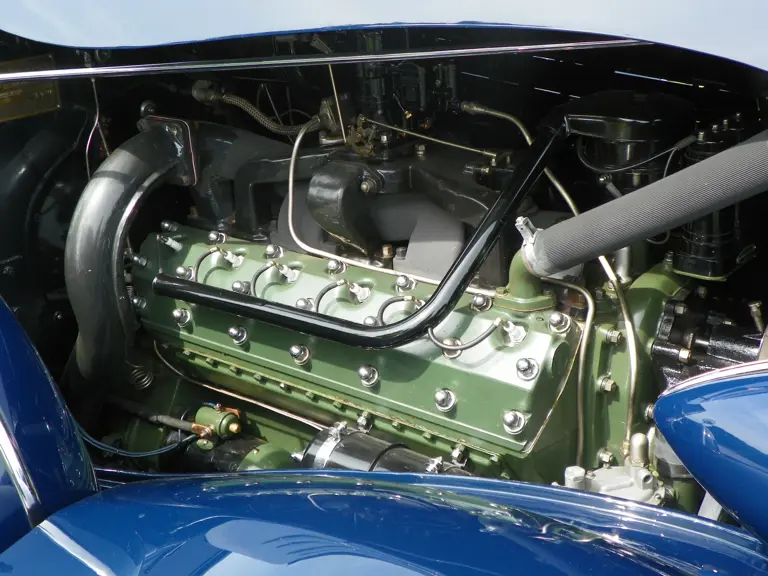
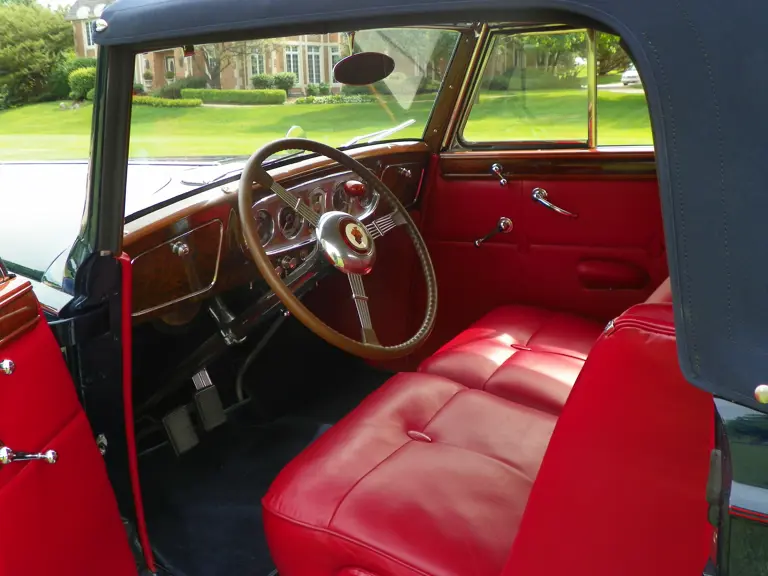
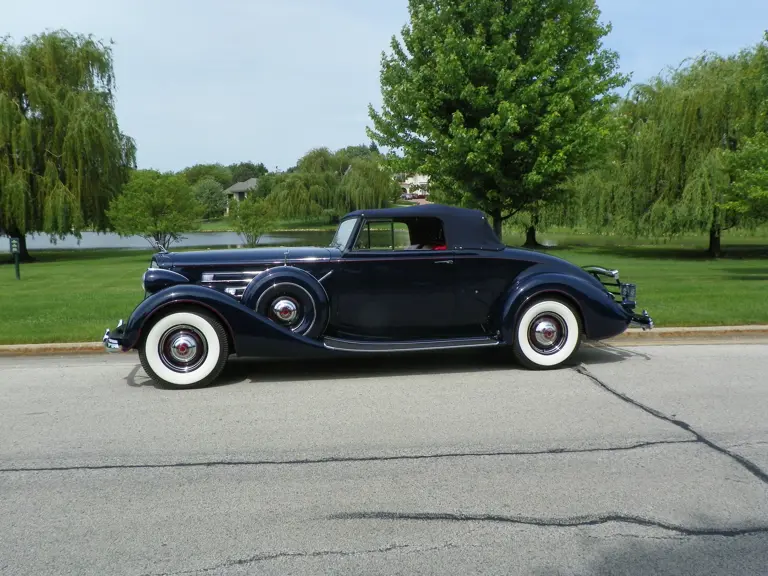

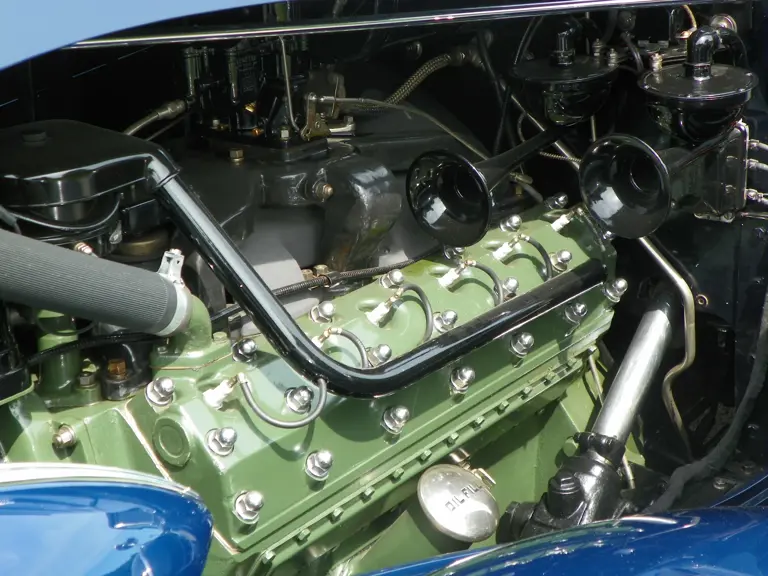
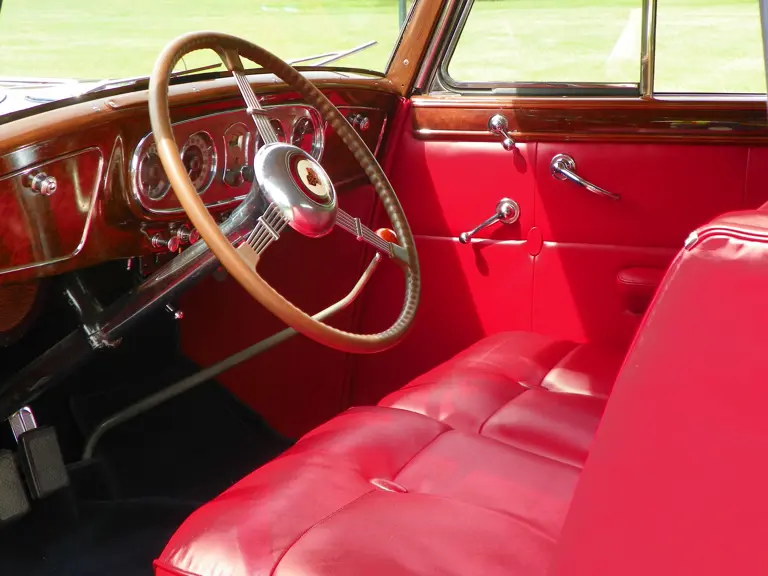
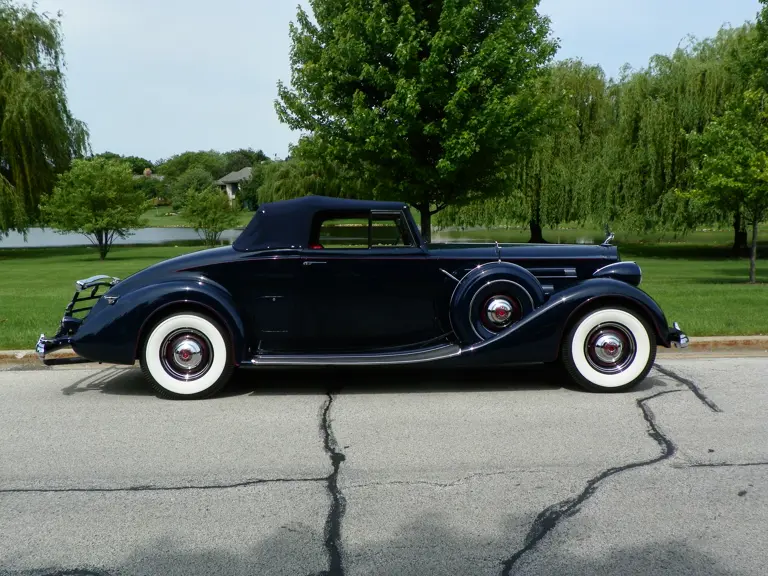
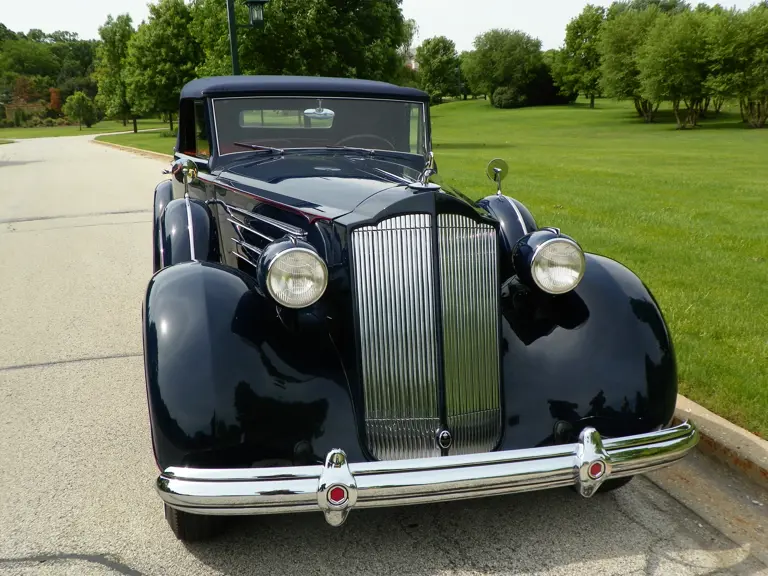
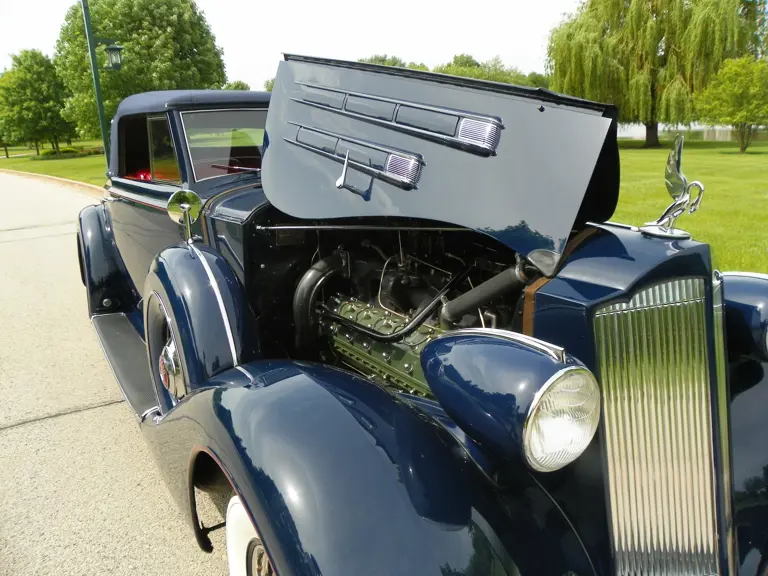


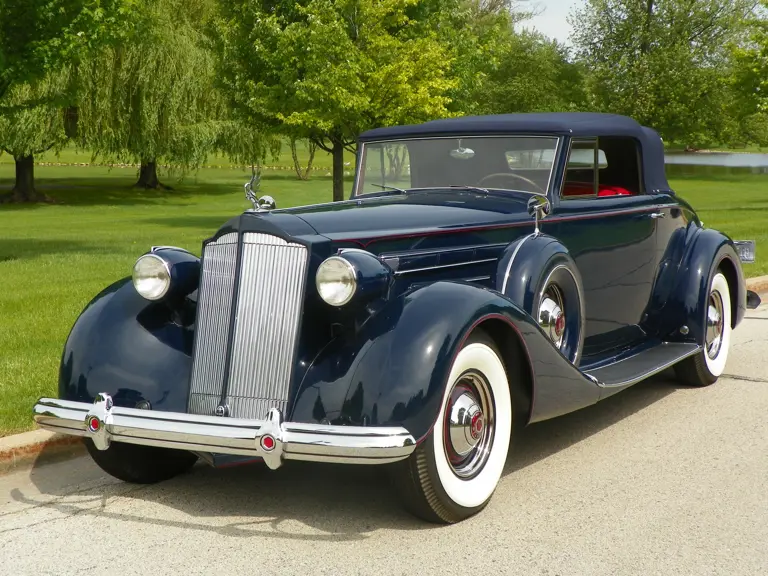
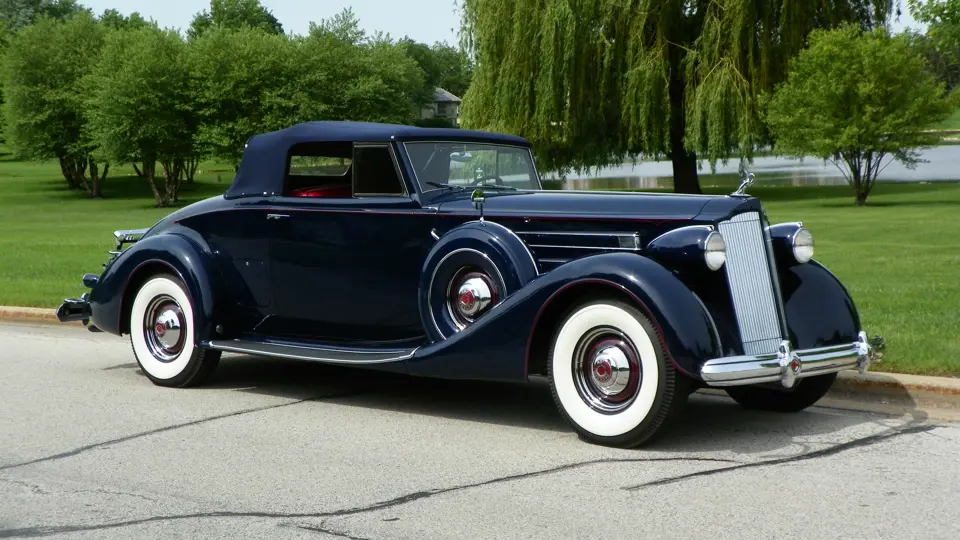
 | Plymouth, Michigan
| Plymouth, Michigan
